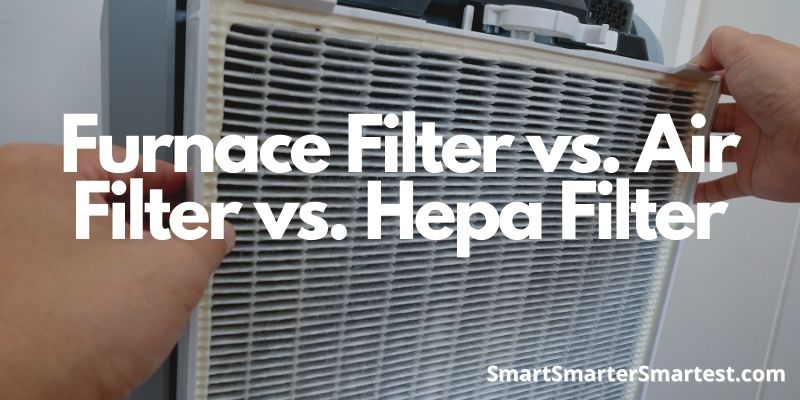If you are curious to know what separates furnace filters, air filters, and HEPA filters from one another, then this is the right guide for you. By the time you’re finished reading this guide, you will know all about each filter, what they do, and what separates one from another.

What Is A Furnace Filter?
Every traditional furnace relies on the same basic system. This system consists of pulling air into the furnace, through returns ducts, and then pushing that air across a heat exchanger. Right after the air has moved across that heat exchanger, it’s pushed out of the furnace and into a series of ducts that spread throughout the entirety of a space.
While a furnace is running, all kinds of dirt, hair, dust, and grime is pulled into it. Just about all of this material, if left unchecked, will flow across the heat exchanger and then into the blower fan that will push it across ducts that spread throughout the space. But, with a furnace filter, that material is filtered out before it can reach the fan, and this ensures that it isn’t capable of spreading beyond the furnace.
Most furnaces use disposable furnace filters. These disposable furnace filters are, usually, constructed out of either fibreglass or paper and polyester.
Fibreglass furnace filters are capable of filtering out most allergens and particles – dust, for example – ensuring that the material doesn’t flow out of the furnace.
Paper and polyester filters perform the same basic function as fibreglass furnace filters. More often than not, they’re able to remove dust particles and a variety of different allergens and contaminants. But, just like fibreglass furnace filters, they don’t last a particularly long time, and so they need to be replaced on a somewhat regular basis.
What Is An Air Filter?
A standard air filter is a cartridge that holds thick paper inside of it. On this thick paper, there are many different holes, all of which are very small. Each one of these holes is used to allow air to flow through the filter freely and quickly.
Most air filters work in the exact same manner, since they often possess the same design. But, the degree to which the air filter works generally depends on the thickness of the air filter, its size, and the materials that it’s filtering.
To begin the air filtration process, air flows across the filter. Every large particle within that air is stopped by the thick paper, which blocks those particles from passing through the filtration system. Particles such as pollen, dirt, and dust – among a wide variety of others – are easily stopped in their tracks by this filter.
Since there are small holes located across the entirety of the filter, air can move in and out of the filter freely. But, of course, these holes are very small and, because of that, only small particles can flow through them. Small air particles being just one example, since are many very small contaminants that standard air filters are incapable of removing.
What Is A HEPA Filter?
The phrase “HEPA” stands for “High-Efficiency Particulate Air”. Any air filter that is capable of trapping up to 99.97% of particles that are 0.3-microns can be given the “HEPA” label. Since HEPA filters must be capable of removing particles that are that small, HEPA filters are designed for removing extremely small particles that most air filters are unable to.
Most HEPA filters are capable of removing a variety of very small, but pernicious, particles. Particles such as dust, pollen, certain germs, dust mites, pet dander; along with many others. All of these particles are extremely small, and due to their small size, HEPA filters are one of the only kinds of filtration systems that can effectively remove them.
Just about every HEPA filter relies on the same, very simple, system. This system consists of intermeshed glass fibers that, when merged together, create a maze. If you look at this maze, it’s difficult to tell what’s going on, due to the small size of each fiber.
While air is flowing through a HEPA filter, all of the small particles are removed. Usually, this happens due to a particle hitting a fiber directly, and becoming stuck. But, the design of a HEPA filter ensures that all of those small particles can be removed.
Conclusion
Ultimately, furnace filters, air filters, and HEPA filters all possess many similarities. Each one of these filters is designed for specific filtration needs. They each fulfill that filtration need by relying on simple systems that trap nasty particles, allowing for clean air.